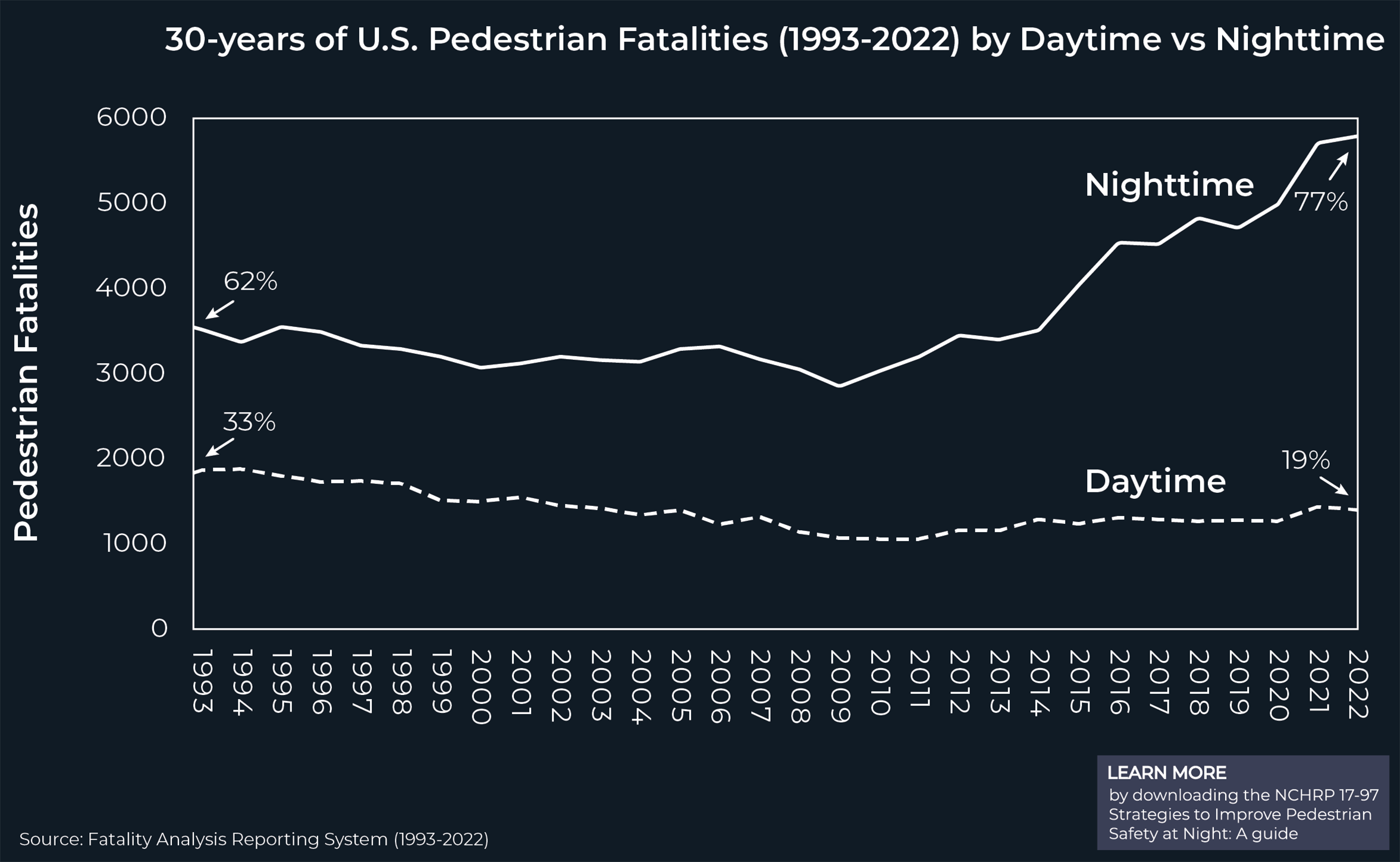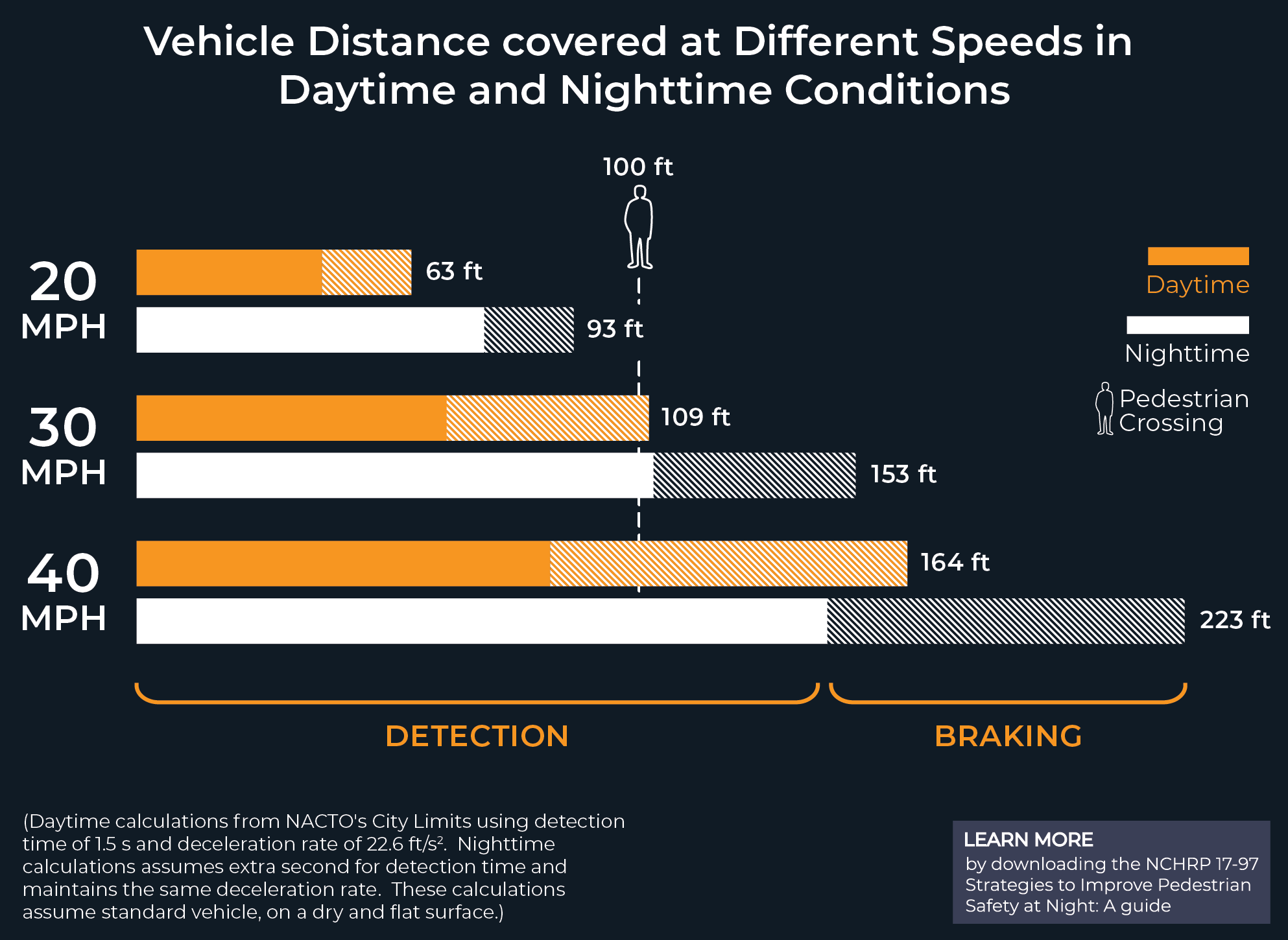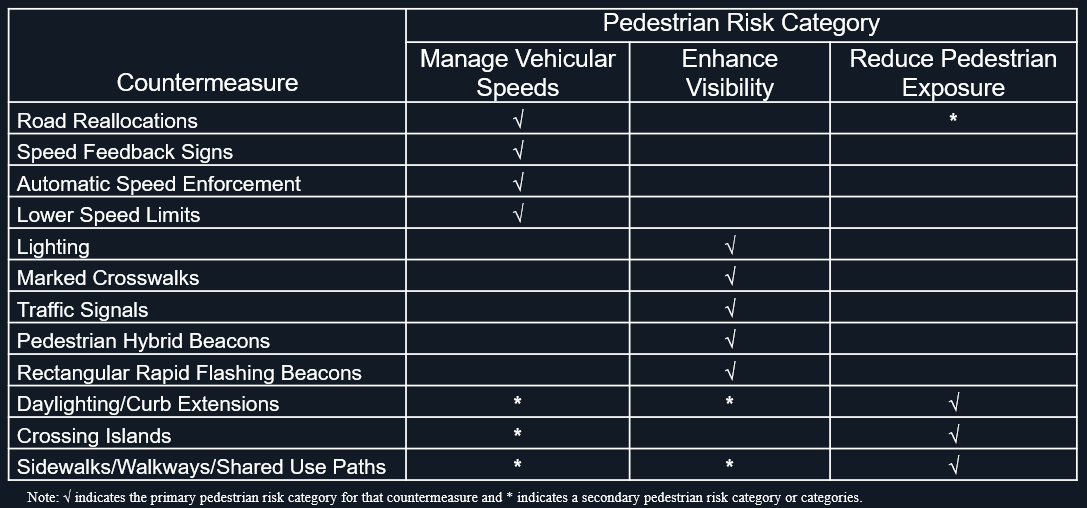NCHRP Research Report 1157: Strategies to Improve Pedestrian Safety at Night
National
Project Summary
Walking (including using mobility devices such as wheelchairs) is critical for a healthy transportation system and a fundamental part of being human. Yet walking in the United States is often a fatal choice. Between 2009 and 2022, pedestrian deaths increased by 83% and nearly 90% of those deaths occurred in darkness.
Michelle Danila, Toole Design’s Director of Engineering Operations, co-led a project to understand and address the root causes of those deaths, with funding and direction from the National Highway Cooperative Research Program (Project 17-97: Strategies to Improve Pedestrian Safety At Night). This research found that darkness, whether at night or because of weather conditions, puts pedestrians at risk, as well as amplifies existing risks such as high vehicular speeds.
A comprehensive literature review informed a research phase comprising four distinct studies: an analysis of fatality trends across the country, an analysis of higher-risk roadways, a driver simulation experiment, and focus groups. The research reveals that pedestrians face a complicated interplay of risk factors when walking in darkness.
The research and resulting guide, “Strategies to Improve Pedestrian Safety at Night: A Guide,” underscore the importance of understanding the characteristics of high-risk roadways, as well as the communities through which they move:
- Black, American Indian/Alaska Native, Pacific Islander, and Hispanic/Latino people were all more likely to die while walking in darkness.
- Land uses that attract pedestrians, such as grocery stores, high-density housing, and convenience stores, were also more likely to see severe or fatal pedestrian crashes.
- Behaviors such as speed, distraction, and driver and pedestrian intoxication all contribute to the likelihood of a pedestrian crash.
While lighting is often presented as a solution, the project determined that, by itself, lighting alone will not address the risks darkness poses to pedestrians. The guide emphasizes the importance of combining multiple infrastructure countermeasures to improve pedestrian safety at night. Nighttime countermeasures should address key pedestrian risk factors by managing vehicle speeds, increasing visibility, and reducing pedestrian exposure to traffic. Examples include roadway reallocation, speed management strategies, Rectangular Rapid Flashing Beacons (RRFBs), high-visibility crosswalks, and exclusive pedestrian facilities.
Streets should be safe for everyone, at all times of day. Through this research and guide, Toole Design and our partners are helping to advance that vision.


